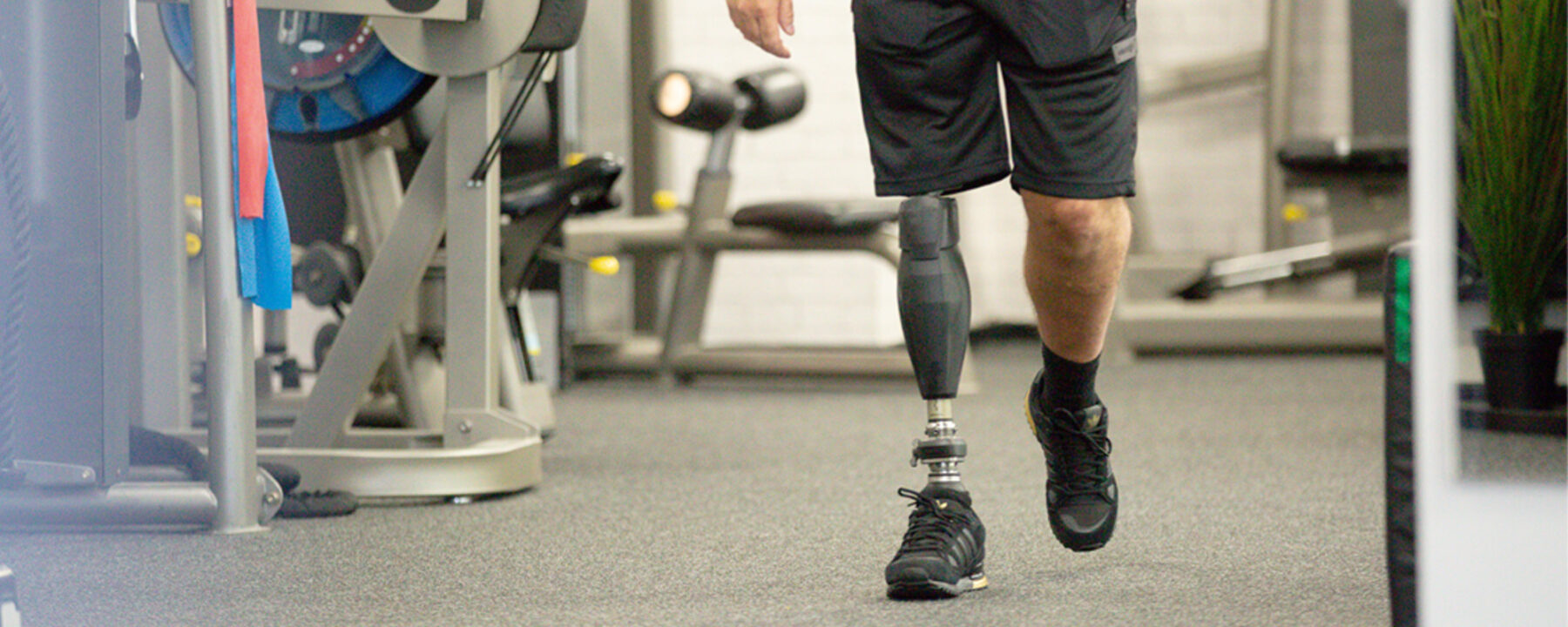
Physio Facts - Looking after your knees
Looking after your knees
Whether you are a below knee or upper limb amputee or use a wheelchair a lot, looking after your knees is important.
The knee is a pretty stable joint held together by lots of ligaments and muscles and is pretty simple in the sense that it bends and straightens your leg. There are some other factors - for example, tibial rotation and the movement of your kneecap but as joints go it’s pretty straight forward.
For those who spend a lot of time sat down you can experience hamstring tightening (the muscles at the back of your thigh). This means that the knee has trouble straightening and you get a pull at the back of your leg. It makes standing up straight much harder as your bum shoots backwards and you end up in a stooped position. Stretching your hamstrings so that the knee can straighten fully is very important, particularly for below knee amputees.
A very easy way of stretching your hamstring is to lie on your back, pop a belt or towel around the bottom of your foot and lift the leg straight up as high as you can and pull it towards you. Try pulling your toes towards your nose and pushing the opposite leg down into the mat for some extra stretch. Now if you’re stretching the leg without a foot you can do exactly the same but pull from the back of the stump and visualise pulling the toes back. Hold for 15-30 seconds and repeat three times. Make sure you do it on both sides.
Once you have better mobility in the hamstrings, you’re aiming for the leg to easily reach 90 degrees when you’re lying on your back. After this it’s time to start strengthening them. An easy way to do this is through a hamstring bridge. Bend your knees slightly (wear a prosthesis if you want or do it single leg to just work on one side) then pick your bum up off the mat. Hold for 30 seconds and slowly roll back down, the further away your heels are from your bum the harder it will be on your hamstring muscles. Try and repeat this up to six times.
The muscles on the front of your thigh, the quads, help straighten your knee. A lot of the time these muscles lose their tone and bulk after an injury or amputation so it’s important to build them back up. For level one just sit with your legs out straight, roll up a towel and pop it behind your knees. Then squeeze your legs down into the towel, tensing your thighs as hard as you can. Hold for a few seconds and then repeat as many times as you can. Ideally, aim for around 30 repetitions. If this is too easy, you can sit on the edge of a chair or a bed and keeping your back straight, straighten one leg and hold for a couple of seconds. Keep your toes pointing up towards the ceiling or knee cap pointing up for the amputated side. Again you can aim for around 30 repetitions on each leg. To really amp it up you could add a resistance band.
To stretch your quads can be a little harder. One way is to lie on your tummy, keeping both hip bones down on the mat. Try and get your heel towards your bum - use a belt to pull your heel down if you can’t reach your ankle. This can be more difficult on the amputated side. Sometimes lying on your side and doing the same action can be easier or you could try going into a lunge position in standing and squeezing your hips forward can get a similar stretch. Whichever stretch you choose for your quads, try to hold it for 15-30 seconds and repeat three times.
One thing you need to look out for with stretching is bouncing - don’t try to bounce up and down to stretch further. Slowly pull the leg towards you and take deep breaths. On every exhale try and push a little bit further. A good way to monitor your progress is to measure your thigh circumference with a tape measure and compare both sides, the more equal the better.
Please email Beth with any questions you may have - bethl@dorset-ortho.com
